Blooming Arrangement Care
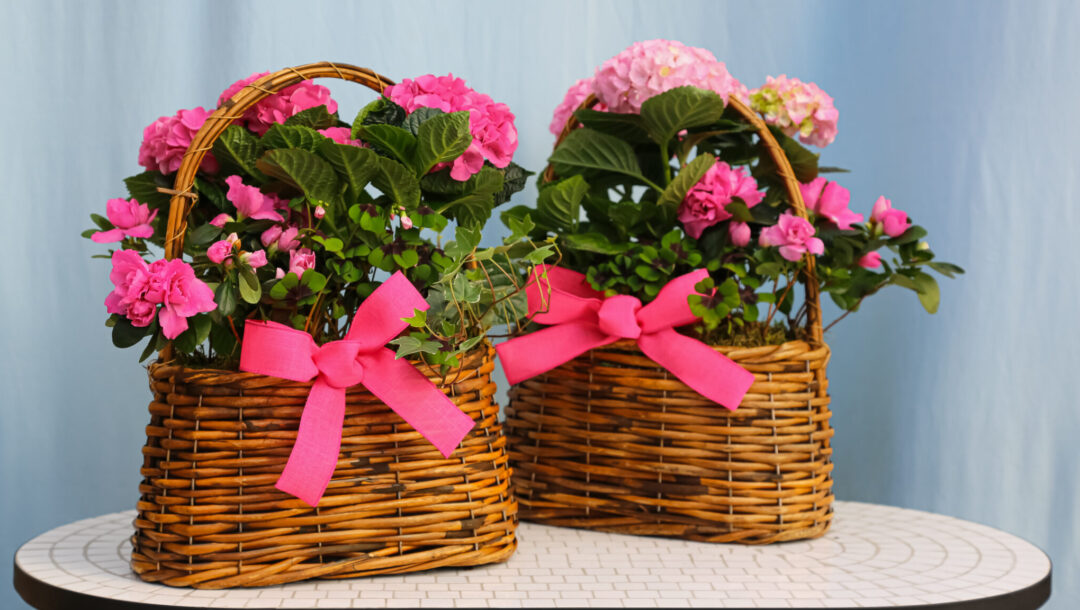
Thank you for bringing home one of our beautifully designed blooming arrangements! Each piece is carefully planted by our talented designers and crafted to last several weeks in your home with proper care.
- Water
Check the soil regularly and water when the top two inches feel dry. Avoid overwatering, as excess moisture can cause root issues. - Light
Place your arrangement in bright, indirect light. Avoid direct sunlight, which can cause flowers to fade more quickly. - Plant Variety
Your arrangement includes a mix of blooming and/or green living plants. Some flowers may naturally finish their blooming cycle before others—simply remove spent blooms to keep the display fresh.
With these simple care steps, your arrangement will stay vibrant and beautiful for weeks! Enjoy your lush, living décor!
________________________________________________________________________________
Potted Houseplant Care
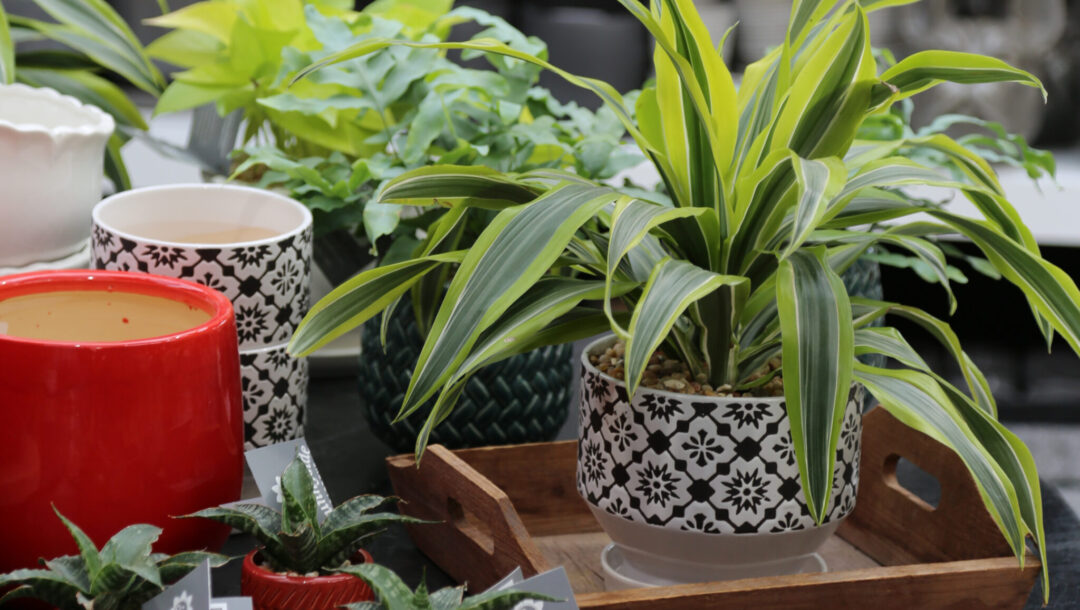
Caring for houseplants can be simple and satisfying with just a few key tips. While each plant is unique, here are general guidelines to help keep your new plant happy and healthy.
- Light
Check your care card to see what your plant prefers—whether that’s full sun, part sun, or no direct sunlight. Place accordingly near windows or in filtered light. - Water
Most houseplants like their soil to dry out completely between waterings. Stick your finger an inch or two into the soil—if it feels dry, it’s time to water. Always double-check your plant’s specific needs. - Fertilizer
During the growing season (typically spring and summer), fertilize once a month with a balanced houseplant fertilizer. Hold off during fall and winter when growth slows down.
________________________________________________________________________________
Succulent Garden Care
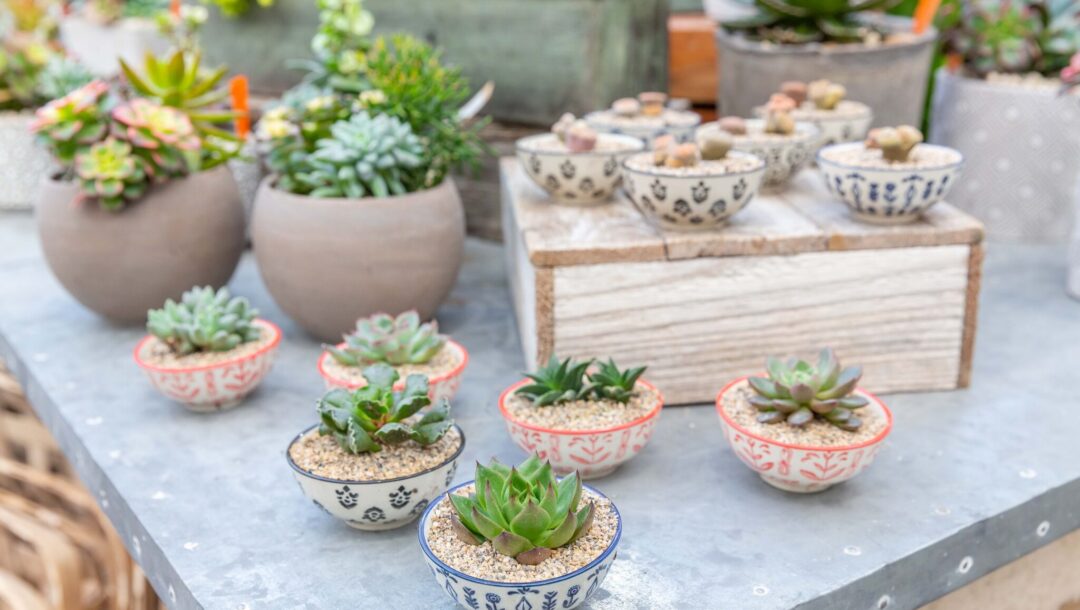
To set your succulents up for success, you’ll need:
- A Container with Drainage
Proper drainage prevents overwatering and ensures healthy roots. (If the container has no drainage , be sure water does not sit in the pot and the soil dries well before watering again.) - Sandy, Well-Drained Potting Mix
Opt for a cactus-specific mix to mimic their natural environment. - A Sunny Spot and Warm Temperatures
Succulents thrive in bright light and temperatures above 55°F. - Fertilizer Every 8-10 Weeks
Skip fertilizing during winter when growth slows. We recommend Scotts Liquid Cactus Fertilizer for the best results.
________________________________________________________________________________
Herb Garden Care
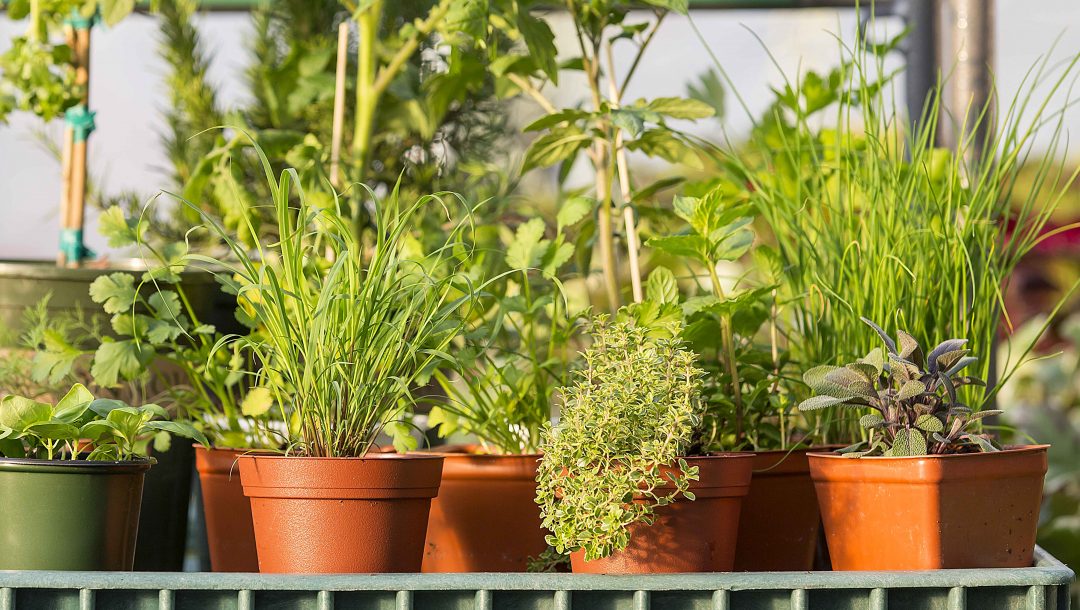
Indoor herb gardening brings fresh flavors to your kitchen, fills your home with delightful fragrances, and adds a touch of greenery to your space. Here are a few simple tips to help you grow your own herbs indoors successfully:
- Sun
Herbs thrive in sunny locations and can struggle in low-light conditions. Sunlight not only stimulates leaf production but also helps dry damp foliage, preventing fungal issues. Place your herbs in a sunny window for best results.
- Heat
In warmer climates, herbs like basil grow year-round as perennials. Here in Minnesota, we need to take a cue from our southern neighbors and provide warmth for these heat-loving plants. Basil, for instance, can’t tolerate temperatures below 55°F. If you’re buying herbs early in the season, have a plan:- Plan A: Bring herbs indoors during cold snaps.
- Plan B: Cover herbs outdoors with a thick cotton cloth or fabric for insulation.
- Water
Keeping herbs hydrated in well-drained soil is essential. Regular watering, especially during hot summer months, ensures healthy growth. However, avoid watering the foliage, as wet leaves can lead to disease. Water early in the morning to allow leaves to dry during the day. Herbs like mint and lemon balm can tolerate wetter conditions if needed.
- Trimming
Frequent snipping or harvesting prevents herbs from flowering and encourages bushy growth. The more you trim, the more flavorful leaves you’ll have for cooking.
- Organic Fertilizer
Water keeps plants alive, but fertilizer makes them thrive! For herbs, especially those destined for your plate, we recommend using organic fertilizer to keep them healthy and happy.
________________________________________________________________________________
Kokedama Care
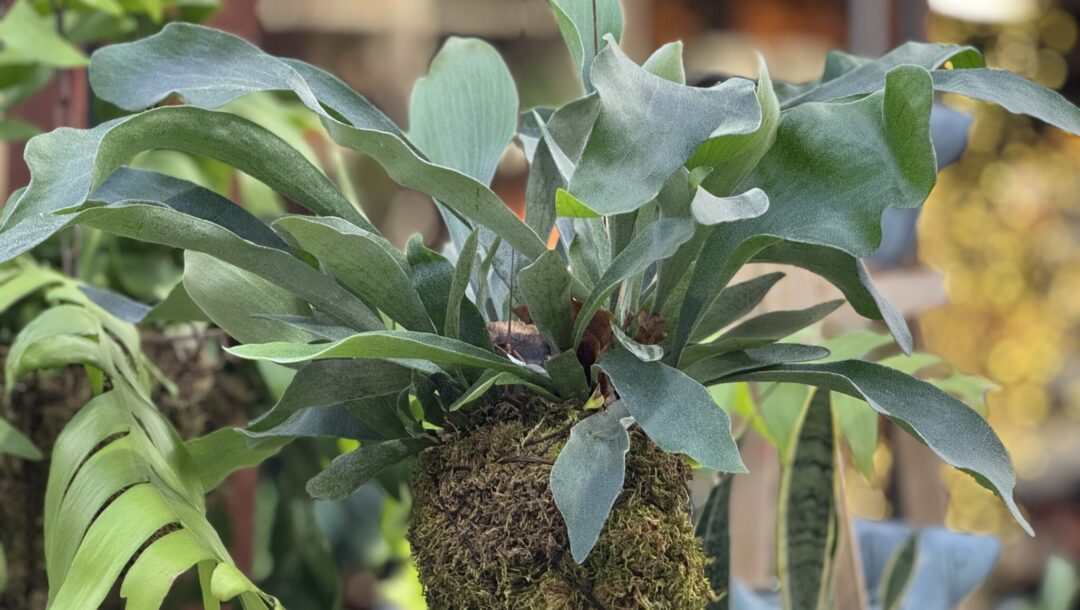
- Water
Submerge the root ball in water until it is fully saturated. Allow excess water to drain before placing it back in its display. - Fertilizer
Feed your Kokedama monthly using a liquid plant food to keep it thriving. - When to Water
Water again when the moss ball feels light to the touch, indicating it has dried out. - Enjoy!
Display your Kokedama in a bright, indirect light location and enjoy its natural beauty!
________________________________________________________________________________
Air Plant Care
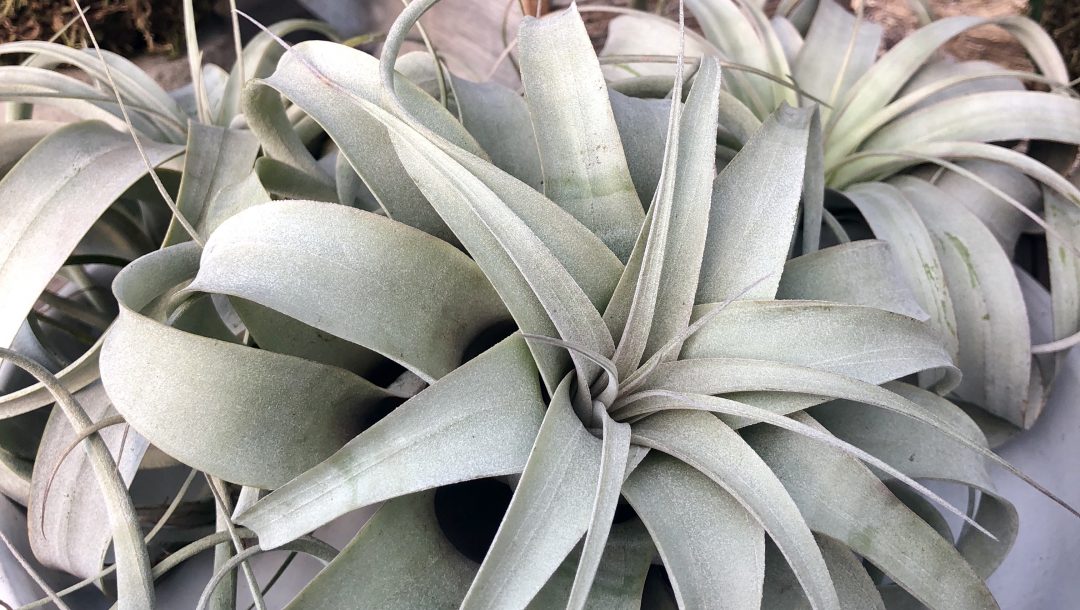
Air plants (Tillandsia) are epiphytes, meaning they grow without soil and absorb nutrients through their leaves. To keep them thriving:
- Light
Place in bright, filtered light—near a window or under a grow light. - Water
Soak in room-temperature water for 20–30 minutes every 1–2 weeks. Shake off excess water and let dry upside down to prevent rot. - Humidity
In dry environments, mist or dunk twice a week for extra moisture. - Airflow
Ensure good ventilation—avoid enclosed, humid spaces without circulation. - Display
Style them in terrariums, hanging displays, or mounted on driftwood.
________________________________________________________________________________
Succulent Pumpkin Care
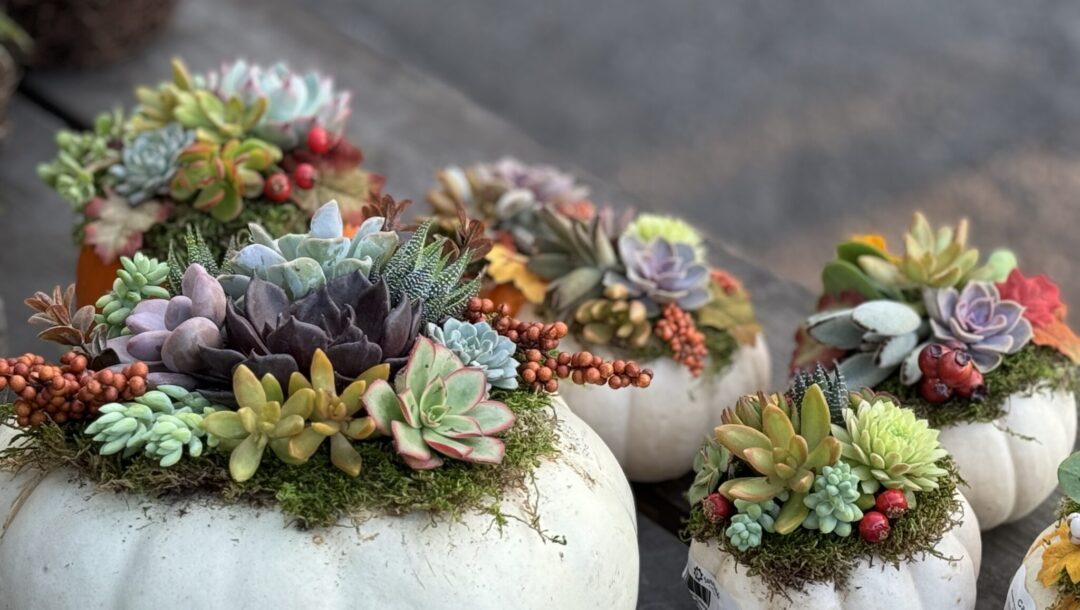
The perfect autumn centerpiece is here! These Pumpkin Succulent Gardens will add beauty to all of your fall celebrations, but the best part may be that the succulents can last much longer. With proper care, you can replant these little beauties and enjoy them for months, if not longer.
- Water
First, you must mist the Pumpkin Succulent Garden daily with clean water. The succulent roots will begin growing into the moss, and eventually into the pumpkin itself as the shell softens. - Repotting
Once the pumpkin starts to deteriorate, carefully cut off the top of the pumpkin containing the succulents. Plant the succulents, including the moss and pumpkin, into the right-sized pot with soil.
Once the pumpkin starts to deteriorate, carefully cut off the top of the pumpkin containing the succulents. Plant the succulents, including the moss and pumpkin, into the right-sized pot with soil.
________________________________________________________________________________
Tree Top Pot Care
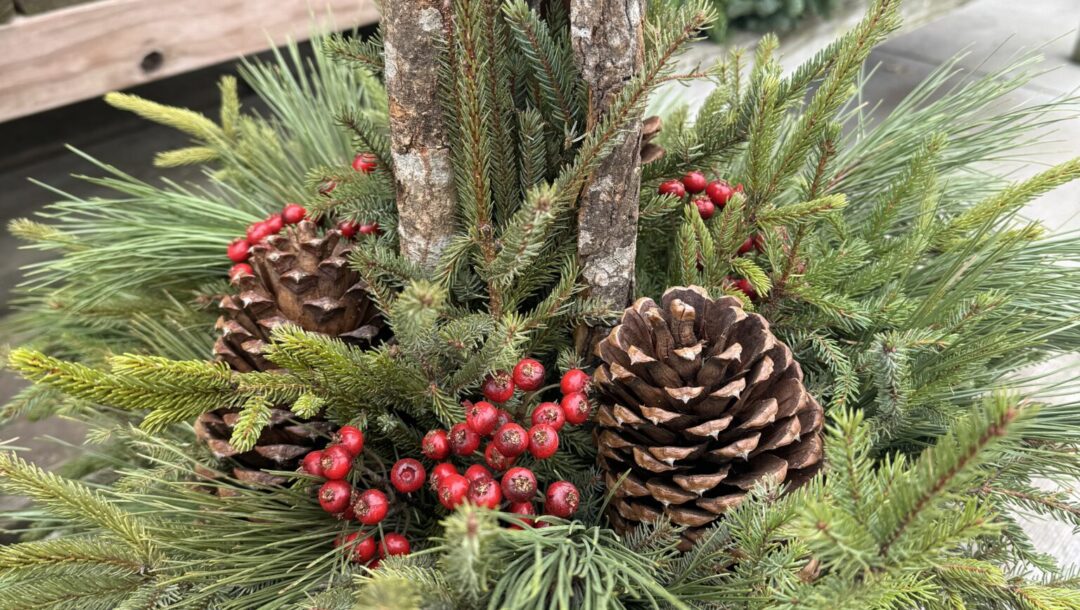
Evergreen tree tops are perfect for lasting through the season, enduring the cold beautifully. We offer a variety of sizes and shapes to help you create the perfect look for the holidays.
- Water
If you set up your tree top pots early in the season, it’s helpful to sprinkle a bit of water on them during the sunniest, warmest days. At the garden center, we use a hose to lightly mist our greens each morning. - Maintenance
Another tip is to spray your greens with WILT STOP or Wilt Pruf—natural sprays that coat the needles to prevent moisture loss and keep them fresh longer.
